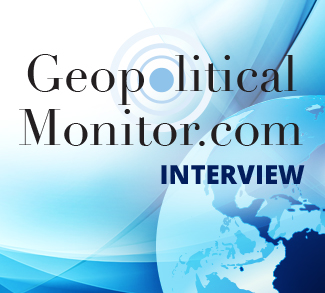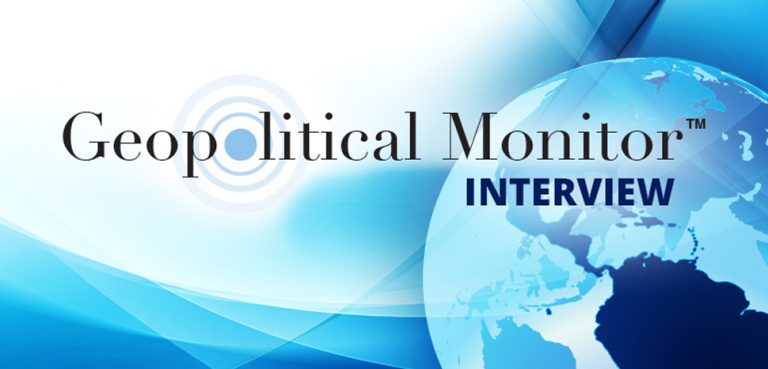Geopoliticalmonitor.com sits down with Dr. Parag Khanna, international relations expert and best-selling author of Technocracy in America.
As you see it, what are the problems with the current US system?
America today better represents degenerative politics than good governance. America today suffers from an abundance of representation and a deficit of administration. There is a great excess in the power of representatives—congressmen and senators—and deep shortfall in the power of administrators such as governors and mayors. There are too many officials trained in law and not enough in policy: In other words, too much time spent arguing rather than doing something. Furthermore, the combination of antiquated institutions and corrupted electoral politics makes much of the federal government no longer fit for purpose. The results are plain to see in America’s falling rankings in life expectancy, education, public safety, and other metrics.
Generally speaking, what new system does your book Technocracy in America envision?
American democracy could be made far more effective with some technocratic modifications that I have observed in other countries. There are three things that the best governments do well: Respond efficiently to citizens’ needs and preferences, learn from international experience in devising policies, and use data and scenarios for long-term planning. If done right, such governments marry the virtues of democratic inclusiveness with the effectiveness of technocratic management. The ideal type of government that results is what I call a “direct technocracy.”
In a more specific institutional sense, what would these reforms look like?
In America, direct technocracy would look like this: A collective presidency of about a half-dozen committee members backed by a strong civil service better able to juggle complex challenges; a multi-party legislature better reflective of the diversity of political views and able to use data technologies for real-time citizen consultation, and the Senate replaced by a Governors Assembly that prioritizes the common needs of states and shares successful policies across them; and a judicial branch that monitors international benchmarks and standards, and proposes constitutional amendments to keep pace with our rapidly changing times.
Could you elaborate on these changes to the Senate?
Since more than half the Senate is now comprised of former congressmen rather than experienced governors (as was the case in the past), it has become a fairly redundant body. Even worse, its members lack the expertise in addressing big national priorities like healthcare and financial reform, foreign affairs and trade. The Senate should therefore be replaced entirely with the members of the National Governors Association, creating a Governors Assembly. America’s governors actually run their states, oversee large bureaucracies, manage complex budgets, and understand local realities. Senators talk and debate about the novel experiments in healthcare and worker training going on in their states; governors actually create and run them. Unlike squabbling senators, governors get along extremely well with each other and overwhelmingly favor cross-border projects that enhance their connectivity to each other. Rather than each state having two senators, it should have two governors—either running on a joint ticket, or with the two most popular candidates being chosen. After the election, one will work in the state capital and the other in Washington coordinating priorities and agendas and sharing successful policies with their peers from other states.
Are there governments around the world that are already operating like this? Maybe there’s an example that the United States can look to try and emulate?
Technocracy in America is full of lively examples of how well-run countries structure their executive, legislative and judicial branches to be more effective. I examine the “collective presidency” model of Switzerland and China, where seven officials form a leadership committee rather than one person having to juggle so many balls in the air and “connect the dots.” I also argue that multi-party parliaments are superior to the American two-party duopoly because there is more competition and accountability built into the legislative process. And I explain how the civil services of Germany, China, and Singapore use big data and social media to better forecast the needs of public and develop long-range scenarios and policies. So there are best practices all over the world that any government can learn from and emulate.
What would you say to those people who believe the US system is intentionally Byzantine, designed to limit domination by any one branch or party, and that it should stay that way?
Principles that may have made sense and worked in the past may not be relevant or appropriate today. Furthermore, some of these institutions or practices are neither democratic nor virtuous, such as the Electoral College or a two-party political system. The most important thing is not to confuse input legitimacy with output legitimacy. In America, a deep complacency has set in that confuses politics with governance, democracy with delivery, process with outcomes. But the “will of the people” is not just to repeat their desires over and over without results. Good technocracies are equally focused on inputs and outputs. Their legitimacy comes both from the process by which the government is selected and the delivery of what citizens universally proclaim they want: solid infrastructure, public safety, clean air and water, reliable transportation, ease of doing business, good schools, quality housing, dependable childcare, freedom of expression, access to jobs, and so on.
Some people might argue that these changes are daunting at a time when Congress can’t even agree on public health issues like combating the Zika virus. Is there a practical, incremental way that the government could move toward these reforms?
Congress does not have to be a body shaped solely by the whims of populism or special interests. The Congressional Research Service (CRS), which responds to queries from specific committees or members, could be empowered as a preparatory body to shape legislation and keep it within the realm of the rational. Congress’s options would be narrowed to those which benefit the maximum number of citizens rather than those most favored by industry lobbies. The Government Accountability Office (GAO) and Congressional Budget Office (CBO) are other examples of legislative branch bodies that provide quality assessments that should more regularly inform important decisions such as scenarios for the spending of additional oil and gas export revenues. Unfortunately, former House speaker Newt Gingrich’s anti-government bias led to Congressional staff being massively slashed. Meanwhile, professionals have been replaced by outside contractors who have less experience but actually cost more.
How best can we move toward technocracy at a time when populism is in the ascendance and ‘expert opinions’ are regarded with increasing suspicion?
Let’s be clear that there is a distinction between opinionated elites and technocratic experts. I am very suspicious of the former as well. However, the most recent World Values Survey reveals that from World War II to today, the percentage of people in Europe and the US who feel it is “essential to live in a democracy” has fallen from two-thirds to under one-third. Meanwhile, the proportion of Americans who believe that experts should decide what is best for the country rather than the government has risen from 32% to 49%. So actually, Americans are craving a better government—one that balances democracy and technocracy.



